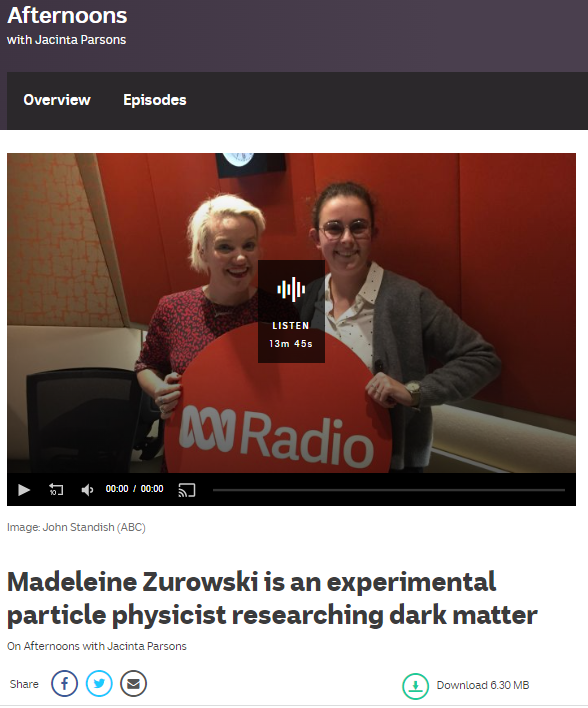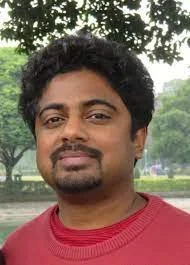The Centre’s main effort in WISP detection is what is known as The Oscillating Resonant Group AxioN Experiment, or ORGAN for short
Read MoreWISPs are similar to WIMPs in some ways – e.g. they don’t interact very much at all with regular matter – but their key distinction is that they are very light in comparison.
Read MoreWhile SABRE looks to search for WIMPs in the traditional mass range – that is to say 10s to 100s of times as heavy as a proton – it is also possible that WIMPs are lighter, perhaps a fraction of the mass of a proton.
Read MoreThe WIMP search has spawned numerous innovations in particle detector technology. To give a sense of the rapid rate of progress, the experimental sensitivity to WIMPs over the last two decades has increased more quickly than computer speeds (as described by ‘Moore’s Law’) during the 80s to 00s.
Read MoreWhile most experimental searches for WIMP dark matter have come up empty, there is one experiment, known as DAMA, that has claimed to have detected dark matter, and no one has yet been able to confirm or refute the claim.
Read MoreThe Centre is pursuing several research avenues in its search for WIMP dark matter. The most mature of these is the SABRE experiment, though we are also pursuing research into other WIMP experiments in the research and development phase – including Cygnus and the low mass WIMP program.
Read MoreThe key features of a WIMP are that they are relatively heavy (with a mass anywhere from the mass of a proton to the mass of a heavy nucleus) and interact only feebly with ordinary matter.
Read MoreNew ATLAS Early Career Scientist Board member , Harish Potti, talks about the board and how he aims to contribute.
Read MoreCentre PhD student Madeleine Zurowski was interviewed on ABC Afternoons by Jacinta Parsons about her ‘odd job’ searching for dark matter in a Stawell gold mine.
Read MoreApplications are open for a PhD position at The University of Sydney, to conduct research in the field of direct dark matter detection. The scholarship is funded by the Australian Research Council (ARC) Grant No. DE220100225: "Unmasking dark matter, from the laboratory to the Milky Way".
Read MoreThe Asia Pacific Center for Theoretical Physics (APCTP) is offering new positions for the Young Scientist Training program at the postdoctoral fellow level in theoretical physics and related fields. The APCTP is an international center founded in 1996 with the first president, Professor C. N. Yang. We are pursuing the world-leading level of research in theoretical physics and the training of young scientists in the Asia-Pacific region.
Read MoreThe University of Adelaide is offering a continuing/tenure track Lecturer in experimental particle physics with emphasis on dark matter direct detection and beyond the standard model physics.
Read MoreInternational Day of Light is a global initiative that provides an annual focal point for the continued appreciation of light and the role it plays in science, culture and art, education, and sustainable development, and in fields as diverse as medicine, communications, and energy.
Read MoreBill’s area of research is in dark matter and Beyond the Standard Model physics, particularly multi-component dark matter interpretations to direct detection experiments.
Read MoreThe SUPL Facility & Laboratory Manager will be responsible for the managing the operation of the overall SUPL facility, with a major focus on safety, coordination of occupancy and access to the facility, and maintaining a close working relationship with SGM.
Read MoreJesper Leong’s research focuses on using QMC to describe the composition, structure and evolution of neutron stars. In addition, he is now applying the theory to describe the properties of finite nuclei in a hope of finding a more accurate explanation of how the elements of the periodic table behave.
Read MoreWanli Xing currently works in theoretical nuclear physics, in particular to understand nuclear structure from deep-inelastic-scattering processes.
Read MoreThomas Venville is a Honours Student working under the supervision of Professor Alan Duffy. Thomas’s research interests in the CDM focus on mapping and exploring dark matter density variations in the Milky Way Halo with both simulations and observational probes.
Read MoreCentre researcher Ben McAllister talks to ABC Statewide Mornings about the National Quantum Road Trip that will travel across Australia in August 2022.
Read MoreDr Dipan Sengupta is an academic at the at the University of New South Wales working on fundamental theoretical particle physics. He was previously a research associate at the Centre’s Adelaide node.
Read More














